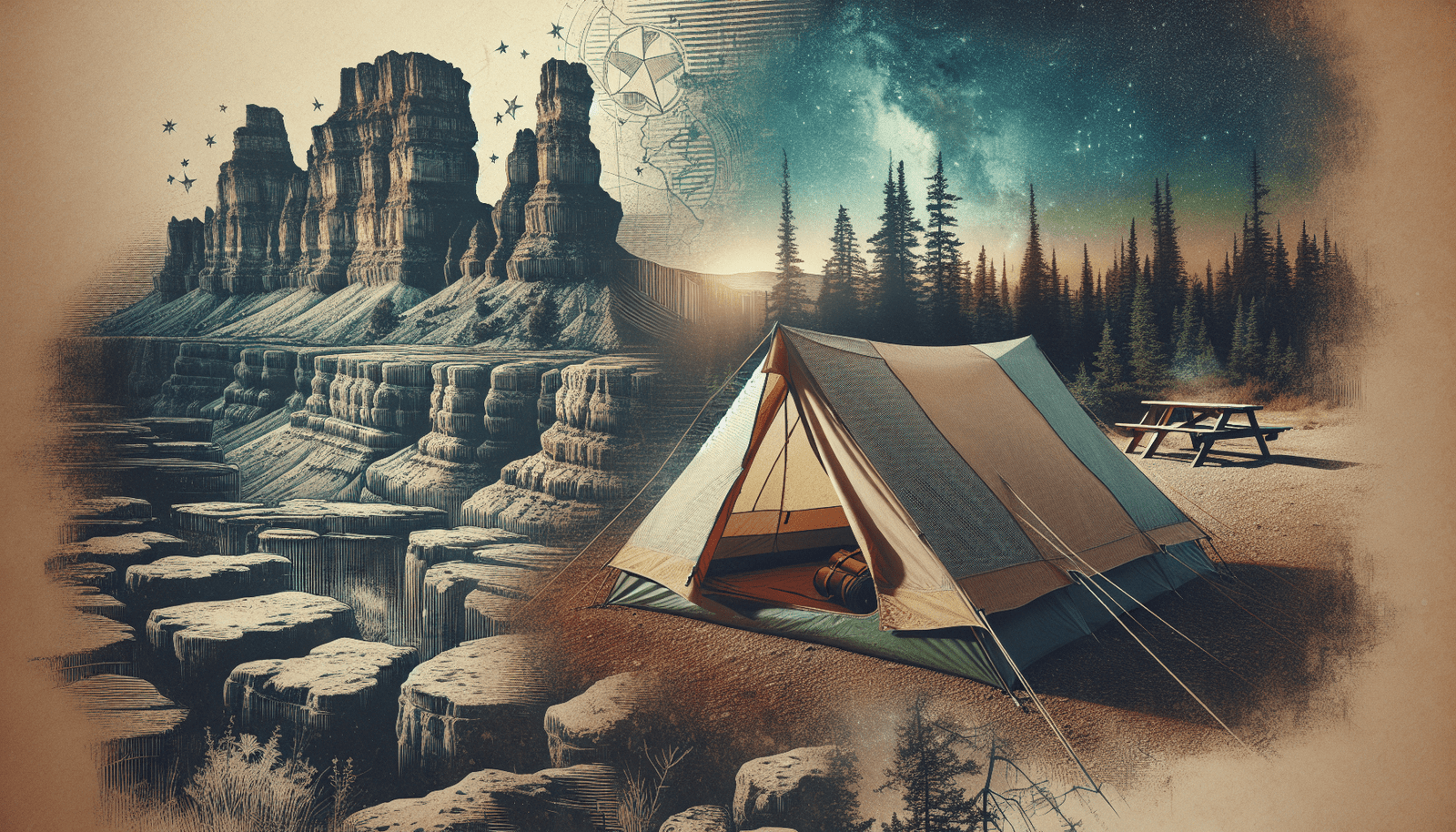Can You Camp on Texas Public Land?” explores the ins and outs of setting up camp across the vast, diverse landscape of Texas. As an outdoor enthusiast, you’ll be delighted to know that Texas offers a variety of public lands where you can connect with nature. However, it’s essential to understand which areas permit camping and any regulations that need to be followed to ensure a safe and enjoyable experience. This guide will help you navigate the rules and find the perfect spot for your next adventure under the Lone Star sky. Have you ever considered the possibility of pitching a tent beneath the vast Texas sky, surrounded by unspoiled nature and the rugged charm of the Lone Star State? The idea of camping on Texas public land can be both exciting and perplexing. With a variety of state parks, national forests, wildlife management areas, and other public lands available, Texas offers numerous opportunities for outdoor enthusiasts like you. But before setting up camp, it’s essential to understand the rules, permits, and best practices that come with camping on Texas public land.
Understanding Public Land in Texas
What Constitutes Public Land?
Public lands are areas managed by government entities, such as the state or federal government, and are open for public use. In Texas, these include state parks, national forests, wildlife management areas, and Bureau of Land Management (BLM) lands. Each type of public land has its own set of regulations and allowable activities, including camping.
Types of Public Lands
To better understand where you can camp, here’s a quick breakdown of the main types of public lands in Texas:
| Type of Public Land | Managing Entity | Example Locations |
|---|---|---|
| State Parks | Texas Parks & Wildlife Dept. | Garner State Park, Palo Duro Canyon |
| National Forests | USDA Forest Service | Sam Houston National Forest, Davy Crockett National Forest |
| Wildlife Management Areas (WMAs) | Texas Parks & Wildlife Dept. | Matador WMA, Gus Engeling WMA |
| Bureau of Land Management (BLM) | U.S. Dept. of the Interior | Very limited in Texas |
Rules and Regulations for Camping
State Parks
Texas boasts over 80 state parks, all of which have camping opportunities, ranging from primitive sites to RV facilities. These parks are typically well-maintained and offer amenities like restrooms, showers, and picnic areas, making them a popular choice for family outings.
Permits and Fees
Camping in a Texas state park usually requires a reservation and the payment of both entrance and camping fees. Fees can range from $10 to $25 per night, depending on the park and the type of campsite.
Regulations
- Camp only in designated areas.
- Campfires are allowed only in provided fire rings or grills.
- Observe quiet hours, typically from 10 PM to 6 AM.
- Pets must be on a leash no longer than six feet.
National Forests
Four national forests are spread across Texas, each offering a variety of camping experiences, from developed campgrounds with amenities to dispersed camping where you can set up camp away from established sites.
Permits and Fees
Camping in national forests is generally free, especially for dispersed camping. However, some developed campgrounds may charge a nominal fee ranging from $5 to $15 per night.
Regulations
- Dispersed camping is allowed, but your site must be at least 200 feet away from any water sources.
- Campfires are often allowed but check for any fire bans.
- Pack out all trash—Leave No Trace principles apply.
- Motorized vehicles must stay on designated roads.
Wildlife Management Areas (WMAs)
WMAs are managed for the conservation of wildlife habitats. While camping is less common in these areas, there are still opportunities for those seeking a more remote experience.
Permits and Fees
A Limited Public Use (LPU) permit or Annual Public Hunting (APH) permit is required to access WMAs. These permits cost around $12 for an LPU permit and $48 for an APH permit.
Regulations
- Camping is usually allowed only in designated areas.
- Seasonal restrictions may apply, particularly during hunting seasons.
- Use only portable, self-contained units for toilets and waste disposal.
- Fires are often prohibited, so come prepared to use a camp stove.
Bureau of Land Management (BLM) Lands
BLM lands in Texas are limited but available, mostly in the western part of the state. These lands offer a wide array of dispersed camping opportunities where primitive camping is the norm.
Permits and Fees
Camping on BLM lands is typically free and doesn’t require a permit unless you are part of a large group or conducting a special event.
Regulations
- Follow Leave No Trace principles.
- Camp at least 200 feet away from any water sources.
- Know the fire regulations, as BLM lands can be susceptible to fire hazards.
- Pack out all trash and human waste.
Best Practices for Camping
Leave No Trace
Regardless of where you camp, following Leave No Trace principles ensures that public lands remain beautiful and accessible for everyone. Here are the seven core principles:
- Plan Ahead and Prepare: Know the regulations and special concerns for the area you’ll visit.
- Travel and Camp on Durable Surfaces: Stick to established trails and campsites.
- Dispose of Waste Properly: Pack it in, pack it out. Deposit solid human waste in cat holes dug 6-8 inches deep, at least 200 feet from water, trails, and camp.
- Leave What You Find: Preserve the past; examine, but do not touch, cultural or historic structures and artifacts.
- Minimize Campfire Impact: Use a lightweight stove for cooking and enjoy a candle lantern for light.
- Respect Wildlife: Observe wildlife from a distance. Do not follow or approach them.
- Be Considerate of Other Visitors: Let nature’s sounds prevail; avoid loud voices and noises.
Safety First
Camping comes with its share of risks, from weather changes to wildlife encounters. Here are some safety tips:
- Check the Weather: Texas weather can change rapidly. Always check the forecast before heading out.
- Stay Hydrated: Texas can get hot, and dehydration is a real risk. Always carry more water than you think you’ll need.
- First Aid Kit: Always have a well-stocked first-aid kit.
- Tell Someone Your Plans: Always inform a friend or family member of your itinerary.
- Bear Safety: While bears are not as common in Texas as in other states, it’s good practice to store food in bear-proof containers or hang it from a tree.
Packing Essentials
Your packing list will vary depending on the remoteness of your camping site and the length of your stay. Here’s a basic guide:
| Essential Items | Additional Items | Specialized Gear |
|---|---|---|
| Tent, sleeping bag, sleeping pad | Camp chairs, table | GPS, maps, compass |
| Cooking supplies (stove, utensils) | Fishing gear, swimming gear | Climbing gear, if applicable |
| Water filters or purification tablets | Extra clothing for weather changes | Portable solar charger |
| First aid kit, insect repellent | Camera, binoculars | Specific gear for activities planned |
| Backpack | Portable toilet, trowel |
Popular Public Land Camping Destinations in Texas
Garner State Park
Garner State Park is one of the most loved and frequently visited parks in Texas. With clear rivers, tall hills, and abundant wildlife, it’s an ideal camping spot.
Sam Houston National Forest
This forest offers a mixture of developed campgrounds and dispersed camping sites, providing ample opportunities for hiking, mountain biking, and boating.
Big Bend National Park (Not Technically Public Land, but Worth Mentioning)
While Big Bend is managed by the National Park Service and doesn’t fall under the typical “public land” category, its vast, rugged landscapes provide unparalleled camping experiences.
Challenges and Considerations
Seasonal Limitations
Some areas may be inaccessible during certain times of the year due to flooding, extreme heat, or other weather conditions. Always double-check seasonal limitations before planning your trip.
Wildlife Concerns
Wildlife is one of the significant charms and challenges of camping. Always store food properly, be mindful of local wildlife rules, and know what to do in case of an encounter.
Fire Risks
Texas can be incredibly dry, leading to high fire risk. Always adhere to fire regulations and make sure your campfire is completely out before leaving your campsite.
Conclusion
So, can you camp on Texas public land? Absolutely! Understanding the various types of public lands, the necessary permits, and the rules and regulations will help ensure a safe and enjoyable camping experience. From the developed campgrounds of state parks to the remote wilderness of national forests and WMAs, Texas has a spot for every type of camper. So pack your bags, prepare for an adventure, and get ready to explore the great outdoors of Texas!
Whether you’re a first-time camper or a seasoned outdoor enthusiast, public lands in Texas offer a wealth of opportunities to connect with nature and create lasting memories. Happy camping! 🌟

